Monday 29th August
Bank Holiday weekends mean the New Forest and East Dorset honeypots are best avoided and we always try to travel in the opposite direction. Our needs were peace, tranquility and a good chance of enjoying some dragonfly photography, so once again Bramshill won the toss.
There was a definite chill in the air and some of the leaves were already turning to bronze as we walked to the ponds. The same Brown Hawker from last week was patrolling along with a couple of male Migrant and the usual cast of Common, Ruddy, Common Blue, Azure and Blue-tailed.
When a female Migrant appeared she was pursued by both patrolling males but she wasn’t interested in anything else but dropping her cargo of already-fertilised eggs. Then somewhat surprisingly she disappeared deep into the thicket. I watched as she circled the boughs within the shadows before perching out of sight and reach behind one of the trunks.
Sue alerted me to a mating pair of Ruddy Darters perched low along the mossy fringes; typically jumpy but thankfully settling just long enough to capture.
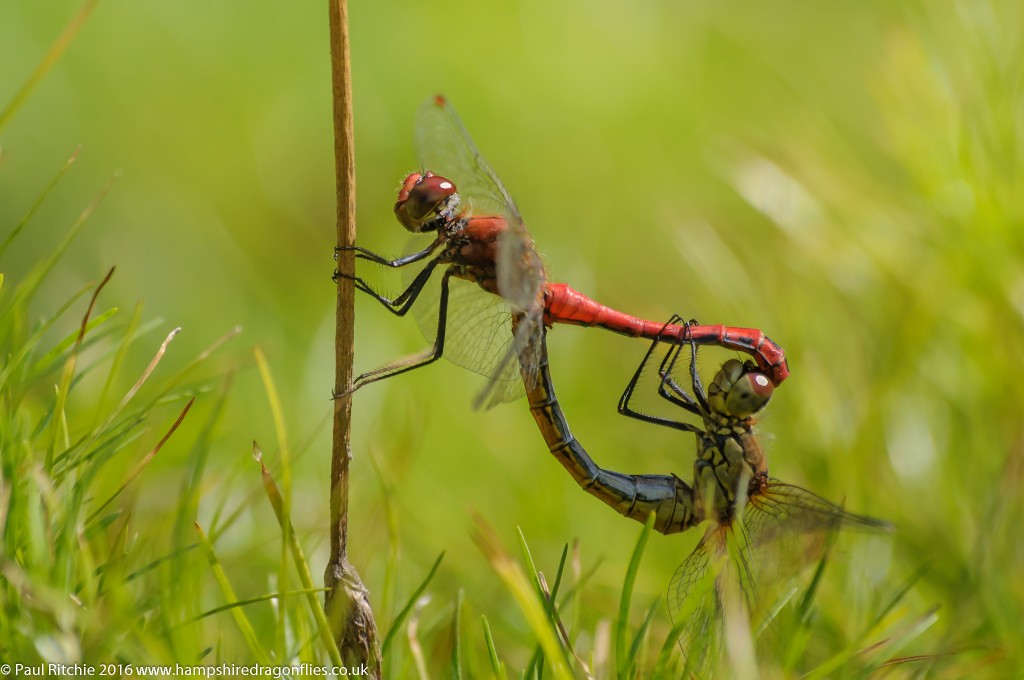
Over in a shaded corner a Migrant gave me some excellent sport and alternative photography methods. I used to only concentrate on well-lit and open-flying in-flight subjects yet dark & shady aspects can present some interesting challenges and pleasing results.
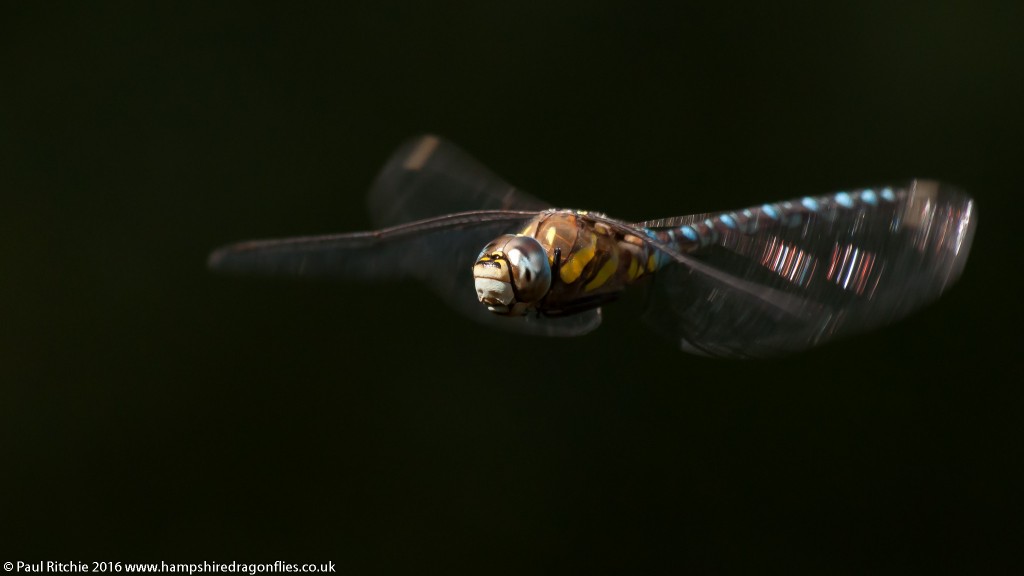
While this chap stayed within the close confines of his shaded corner another male was patrolling a small area around and over a small patch of reeds and occasionally would fly out across the moss before returning. This was the aspect and background I hankered after so I waited patiently for the opportunity.

Along the edges of the moss a male Ruddy Darter perched low upon a grass stem against a colourful background of late summer wild flowers, frequently rising and repositioning while I searched for the most pleasing aspect.
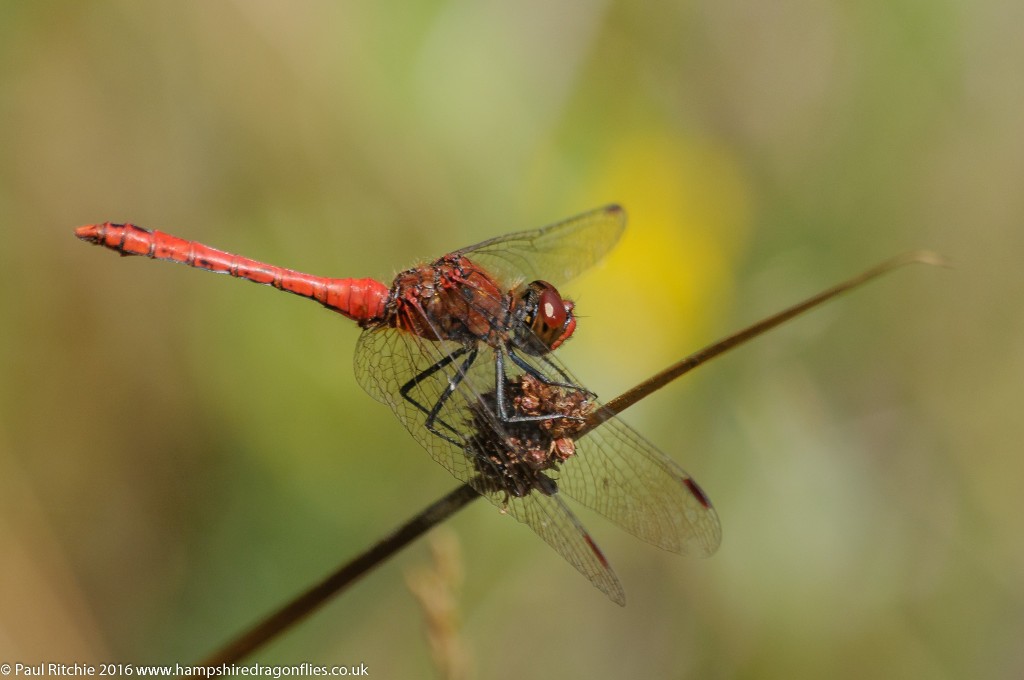
At Long Lake the frequent burst of late summer warmth brought out armies of damselflies skimming the surface with opportunistic fish attacking from underneath. A couple of Migrant and a tatty male Brown patrolled the bulrushes while a female released her burden in the depths of emerging plants.
One of the extraordinary behaviours of the Migrant is their unusual way of perching. Unlike most hawkers they don’t adhere to the hanging method; suspending themselves head up and tail down from a suitable perch. Quite often they will perch horizontally or even face down on the bent sections of bulrush.

Along the mossy fringes a couple of male Ruddy offered contrasts to the Common Blue and Emerald taking refuge and the sight of a late and battle-scarred Four-spotted Chaser brought a smile to my face. Well done sir – what a trooper!
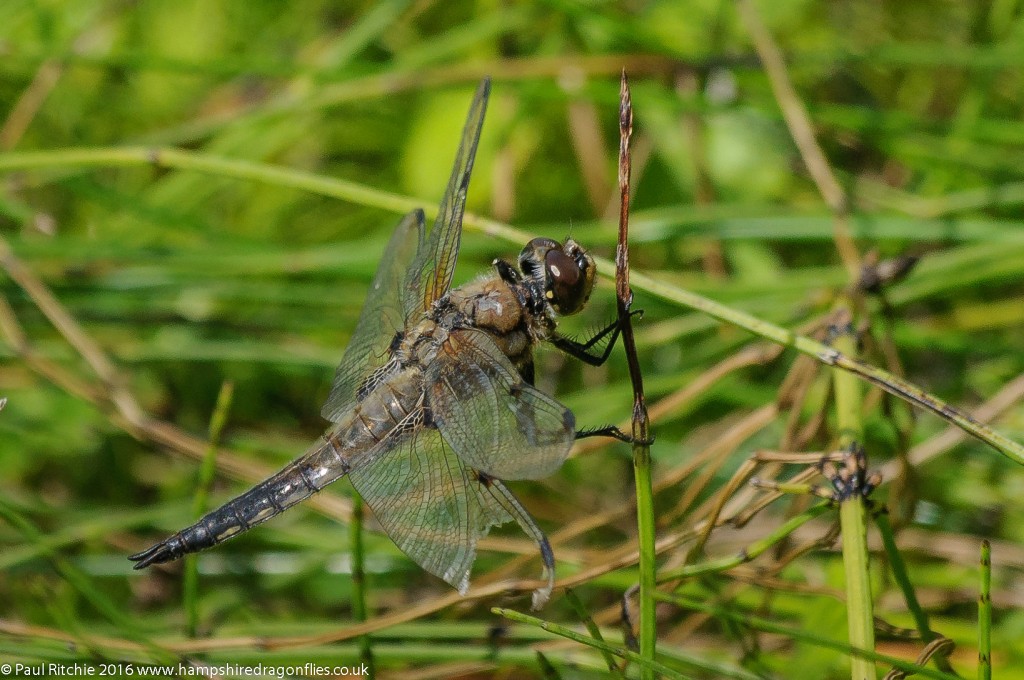
A Southern Hawker briefly appeared to hassle the Migrant before disappearing into the woods so I persevered with the latter, watching and waiting until he came close enough to warrant raising the camera.
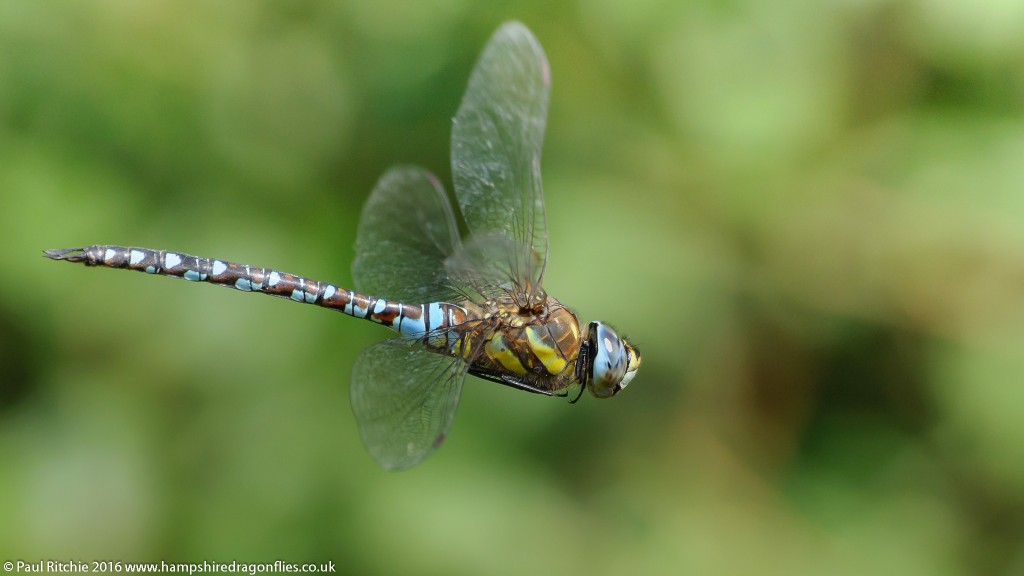
Besides, and maybe due to, the morning chills there a definite signs of the waning season, so when the sun shines enough to raise the temperature I’ll spend September at those places where the hawkers provide both the spectacle and the sport.
